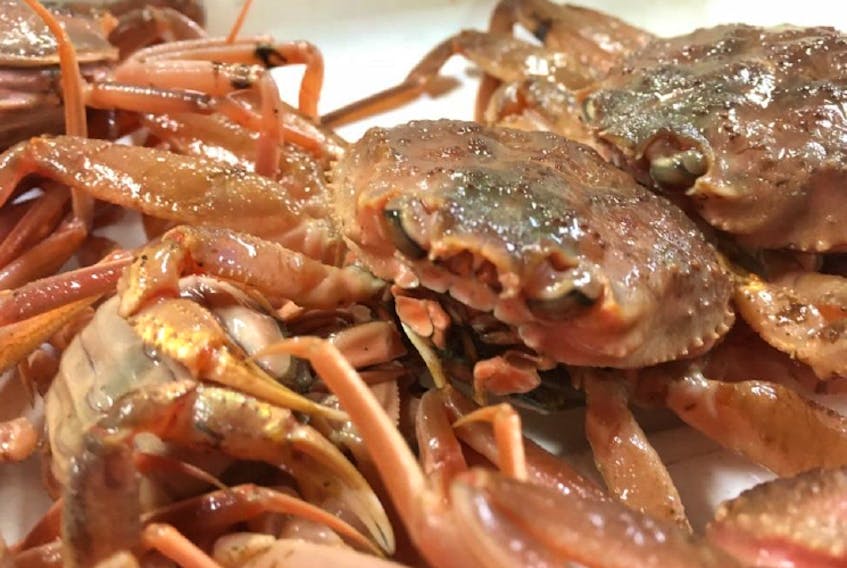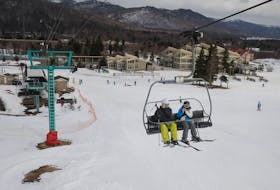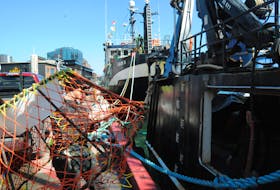ST. JOHN'S, N.L. — Thanks to increases this season in quotas and prices, snow crab harvesters in Newfoundland and Labrador will add $400 million in landings to the province’s economy this year.
Fisheries and Oceans Canada decided on a quota increase for the 2021 season, putting the total allowable catch at 38,186 tonnes. Last year the total quota was just over 28,000 tonnes.
The final price for snow crab has not been set, but it will be over $5 per pound.
Related
- VIDEO: Newfoundland fisherman provides proof seals eat crab
- Latest snow crab science is good news for Newfoundland fishers, plant workers, processors
- Not a banner year, but snow crab fishing netted $500 million in Atlantic Canada this season
The province’s Fish Price Setting Panel is reviewing the offers of the Fish Food and Allied Workers union (FFAW) and the Association of Seafood Producers (ASP) from price negotiations last week.
The union has suggested a price of $5.73 a pound while the processors have suggested $5.25.
Under the province’s rules for price setting, the panel has to choose one of those offers.
The price setting panel is expected to make their final decision this week since the snow crab fishing season begins April 1.
Even if the panel picks the lower price, that’s still an increase of approximately 50 percent over last year’s prices of $3.44.
The past four years, in fact, have seen the best prices ever paid for crab.
From 2000 to 2015, prices stayed relatively steady at $2 per pound.
As quotas were cut, however, the value of the catch increased, from $2.50 per pound in 2016 to more than $5 per pound at the beginning of the 2019 season and for 2021.
Although the overall snow crab quota is increased by 39 percent, fishers in one zone will actually have less to catch.
The latest stock assessment of snow crab showed declines in the biomass in area 2HJ, off the coast of Labrador. As a result, the total allowable catch in that region will be cut by 20 percent to just over 1,287 tonnes.
Here are the quota increases in other areas:
- Area 3Ps (south coast) up 53 per cent, to 5,047 tonnes
- Area 4R3Pn (Southwest Coast) up 35 per cent to 350 tonnes
- Area 3LNO up 34 per cent to 23,648 tonnnes
- Area 3K up 16 per cent to 7,454 tonnes
While the increases are significant for some areas, the total allowable quotas are still significantly lower than in previous years. The peak was around 1999 when the quotas were just over 61,000 tonnes. Since 2015, quota cuts have reduced the total allowable catches to 35,000 and lower.
In 2020, COVID caused a collapse in the food service markets as the cruise ship, vacation resort and restaurant industries shut down.
Processors had to turn to retail—supermarket shoppers—for seafood sales and couldn’t offer as much for catches.
The drop in prices created angst, and protests by fishers, at the start of last year’s fishing season. They staged protests at Port aux Basques in an attempt to halt truckloads of crab coming from Nova Scotia for processing at Triton and Glovertown.
They also protested at FFAW headquarters in St. John’s, to demonstrate their displeasure with the union’s work on price negotiations. For that they drew flak from a general public concerned about the gathering of the large crowd and lack of social distancing during a Level 5 lockdown.
In the end they went fishing for $3.44 a pound.
Barb Dean-Simmons is a business reporter for the SaltWire Network.
[email protected]
Twitter: @BarbDeanSimmons









